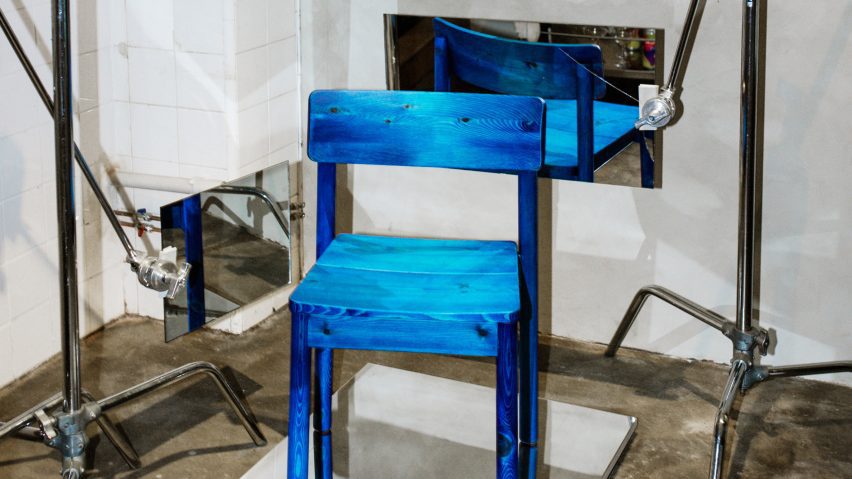
Minus launches subscription furniture with ambition to go "beyond zero"
Norwegian brand Minus is looking to disrupt the interior design industry by offering carbon-negative furniture on a subscription basis, which was launched at Designers' Saturday.
Minus debuted its first furniture collection, designed by Oslo studio Jenkins & Uhnger, at the biennial Designers' Saturday event in the Norwegian capital.
The ambition is to go "beyond zero" by creating timber products that are carbon-negative across their lifespan. This led the brand to develop a rental service model.
"We started Minus to realise an optimised value chain for both production and consumption," said Kristian Notland Harnes, the brand's CEO and co-founder.
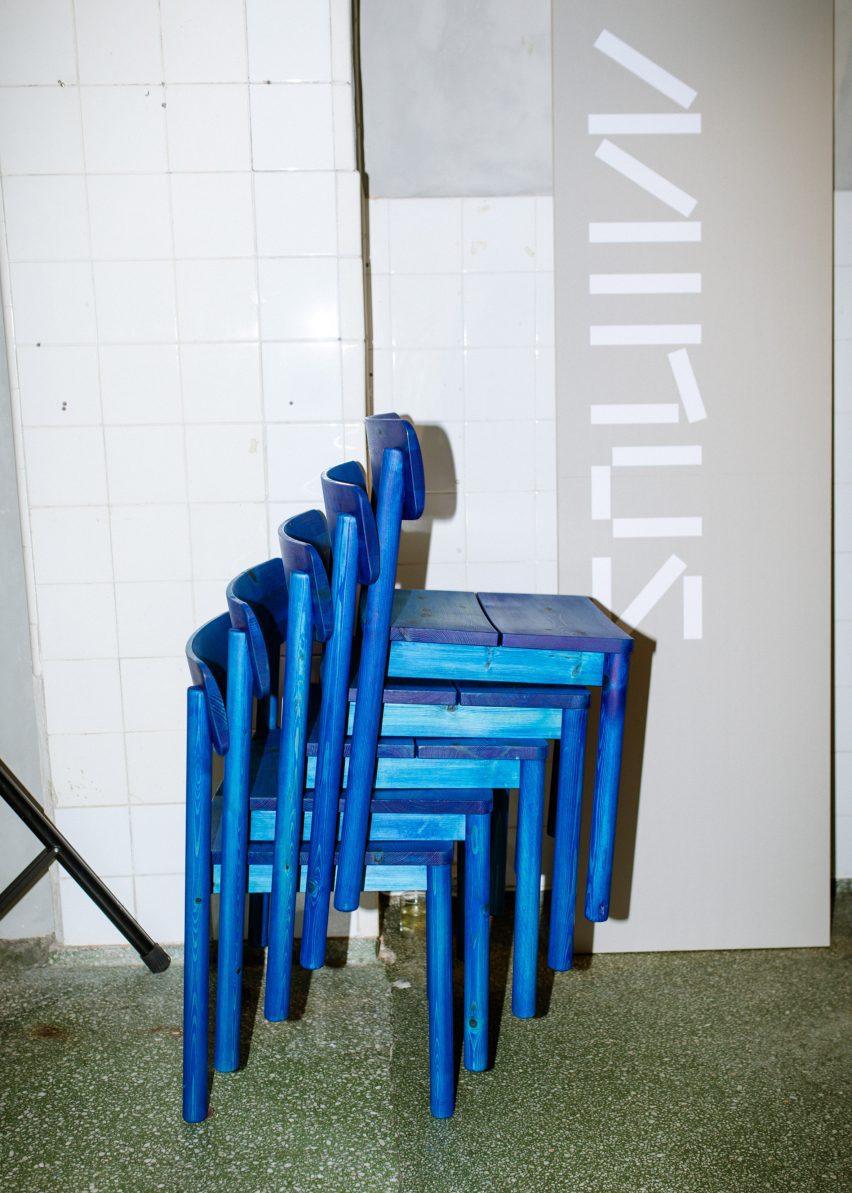
The strategy, he told Dezeen, is to design with "a 100-year perspective".
This means taking responsibility for a product after it has left the factory, ensuring it stays in use as long as possible and is recycled at the end of its life.
"In the western world, a chair generally lives for 10 years," Harnes said. "If the wood takes 100 years to grow, there is an imbalance there. It's 90 per cent deforestation."
"It's about material control," he added. "That leads us to subscription because it enables us to take responsibility for the material lifespan."
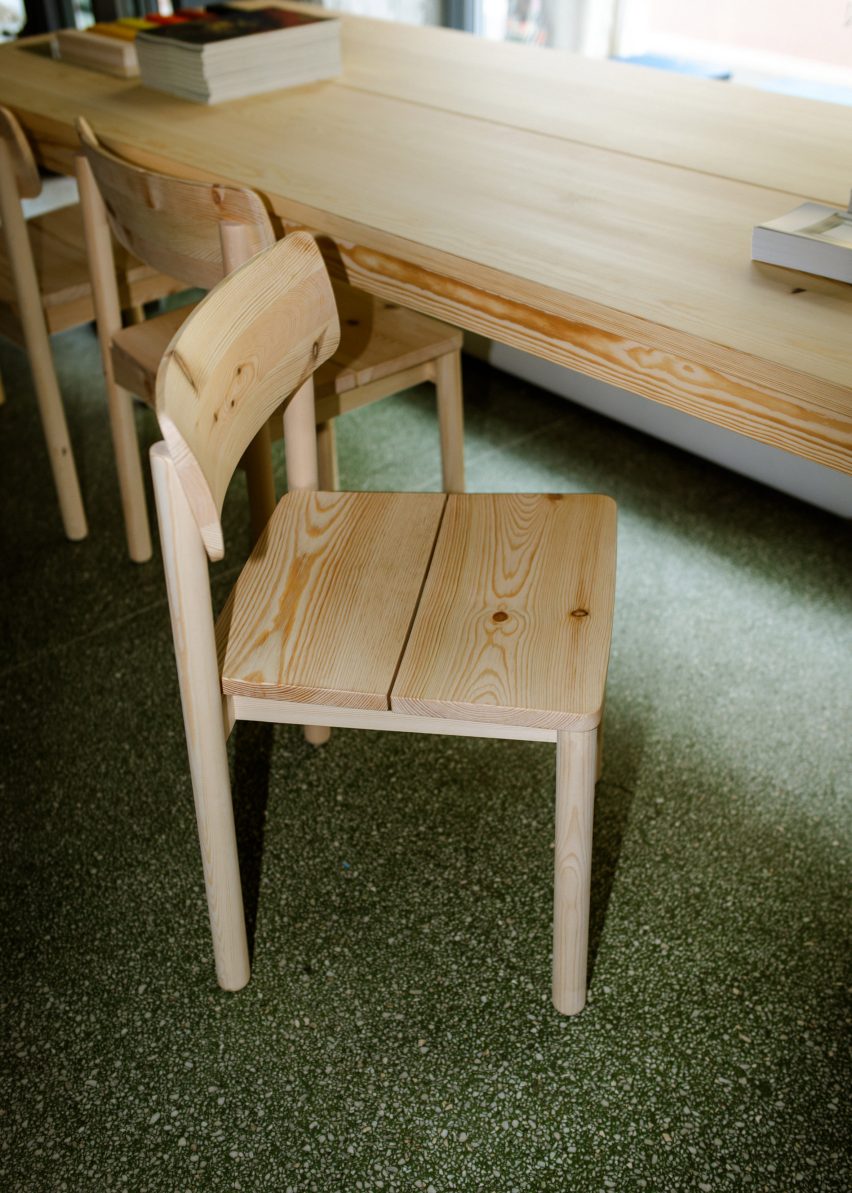
Minus's first product, the Minus Chair, was launched as part of the Norwegian Presence exhibition in Milan last year and has since been longlisted for a 2023 Dezeen Award.
The brand has now added a stool, a bench and a table to its collection, all produced in pine wood.
When the pieces are no longer serviceable, Minus says it will take them back and convert them into a charcoal-like substance called biochar, stabilising the carbon contained in the timber and preventing it from being released into the atmosphere.
The result is a kind of fertiliser that can be added to soils to help them sequester more carbon.
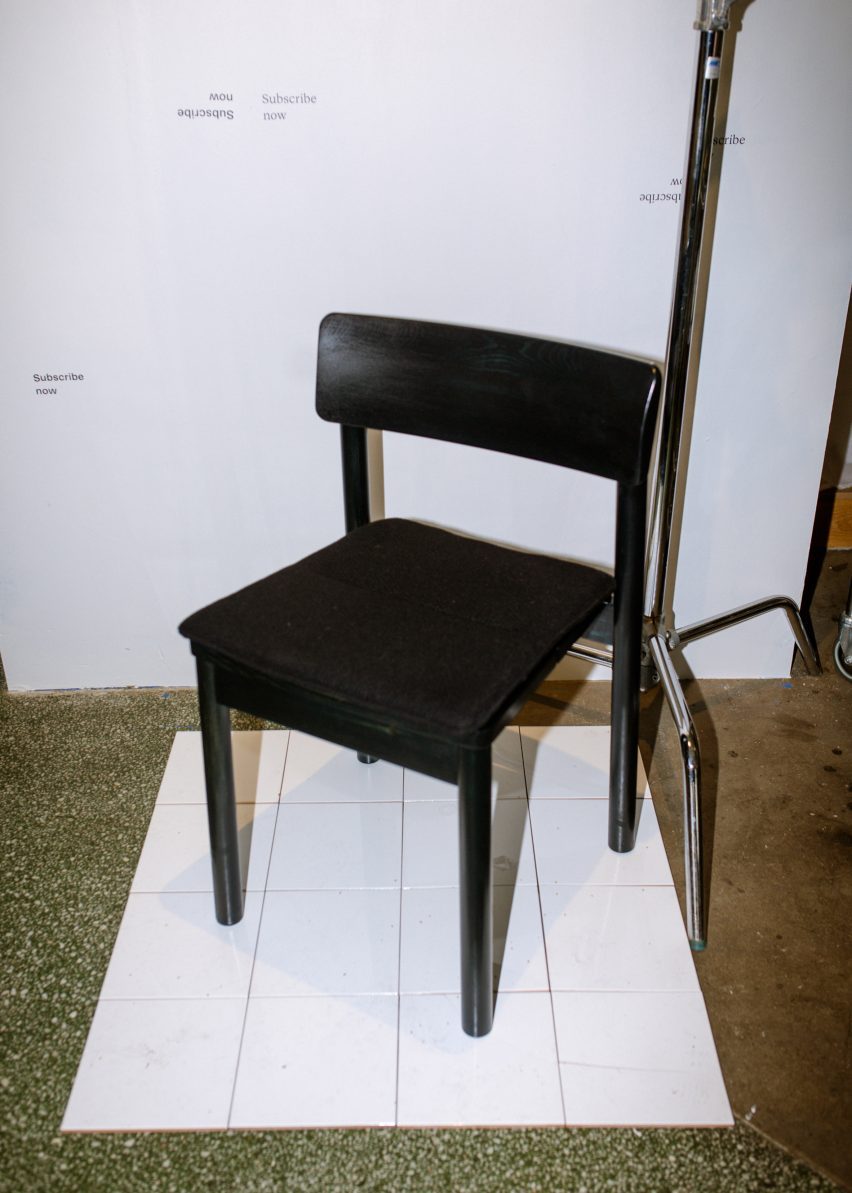
According to Minus' calculations, the chair produces -2.6 kilograms of carbon dioxide equivalent (CO2e) emissions throughout its life when rented or 1.9 kilograms when purchased outright, compared with an industry standard of 27 kilograms.
Minus plans to offer all of its products for sale or subscription, although the subscription model is currently still in the trial phase and only available to select businesses.
"Customers initially sign a 30-month subscription period, which basically covers our production cost," said Harnes.
"The price falls 30 per cent every three years, giving you an incentive to keep the furniture longer. It is also possible to subscribe to used chairs at a lower price."
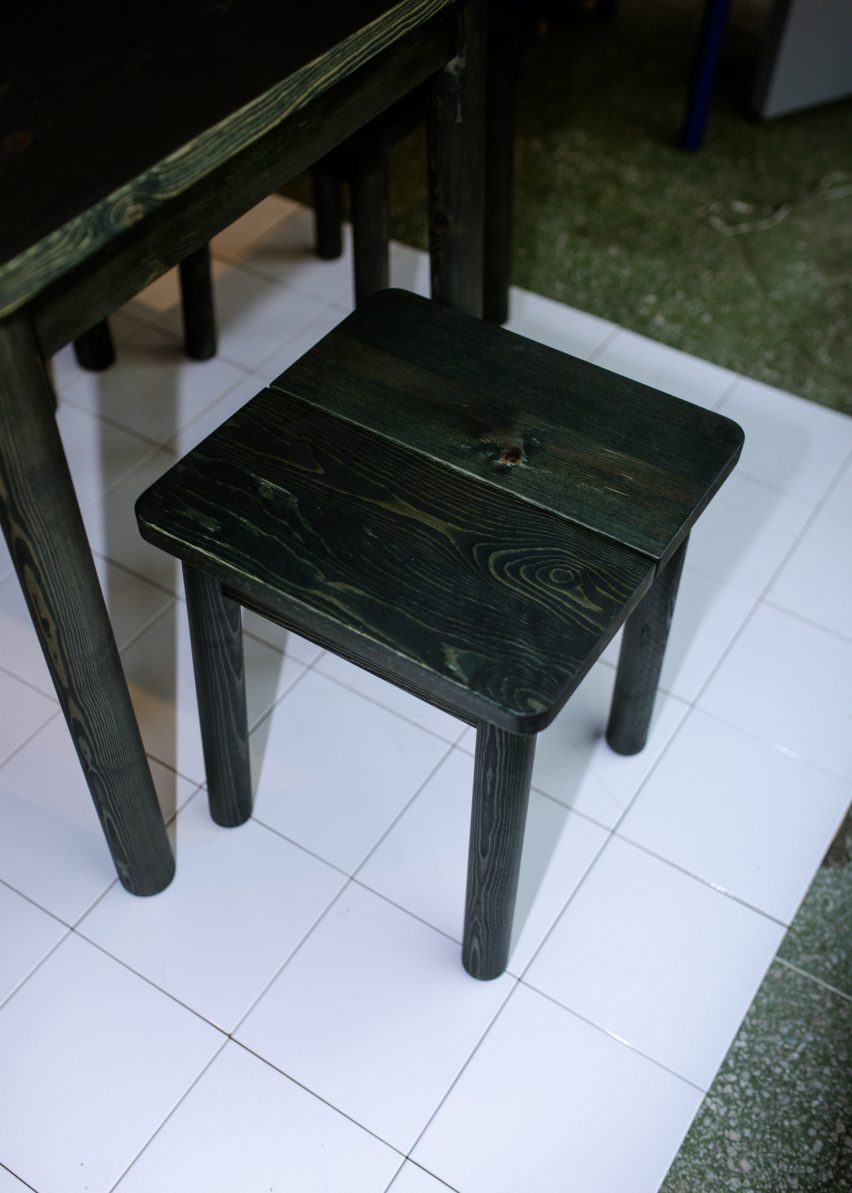
Designers Thomas Jenkins and Sverre Uhnger played a key role in shaping Minus' manufacturing operations.
With a brief to "design the most environmentally friendly chair possible", they took a holistic look at how the production process could be adapted to minimise energy use and make optimal use of materials and resources.
This led Minus to adopt a decentralised approach. Instead of setting up a single production facility, the company manufactures in various factories and sources timber from as close to those locations as possible.
The furniture, meanwhile, is designed to require as little machining as possible, with few curves and no unnecessary details. The goal was to make the designs highly efficient but still functional and attractive.
By being involved from the project's outset, Uhnger and Jenkins were able to impact the carbon footprint across every aspect of Minus' business.
"Quite often it's too big of an investment for a manufacturer or the brand to change all these aspects for one product or one product range," Uhnger said.
"Therefore it is almost easier for a start-up to make real change than the bigger brands."
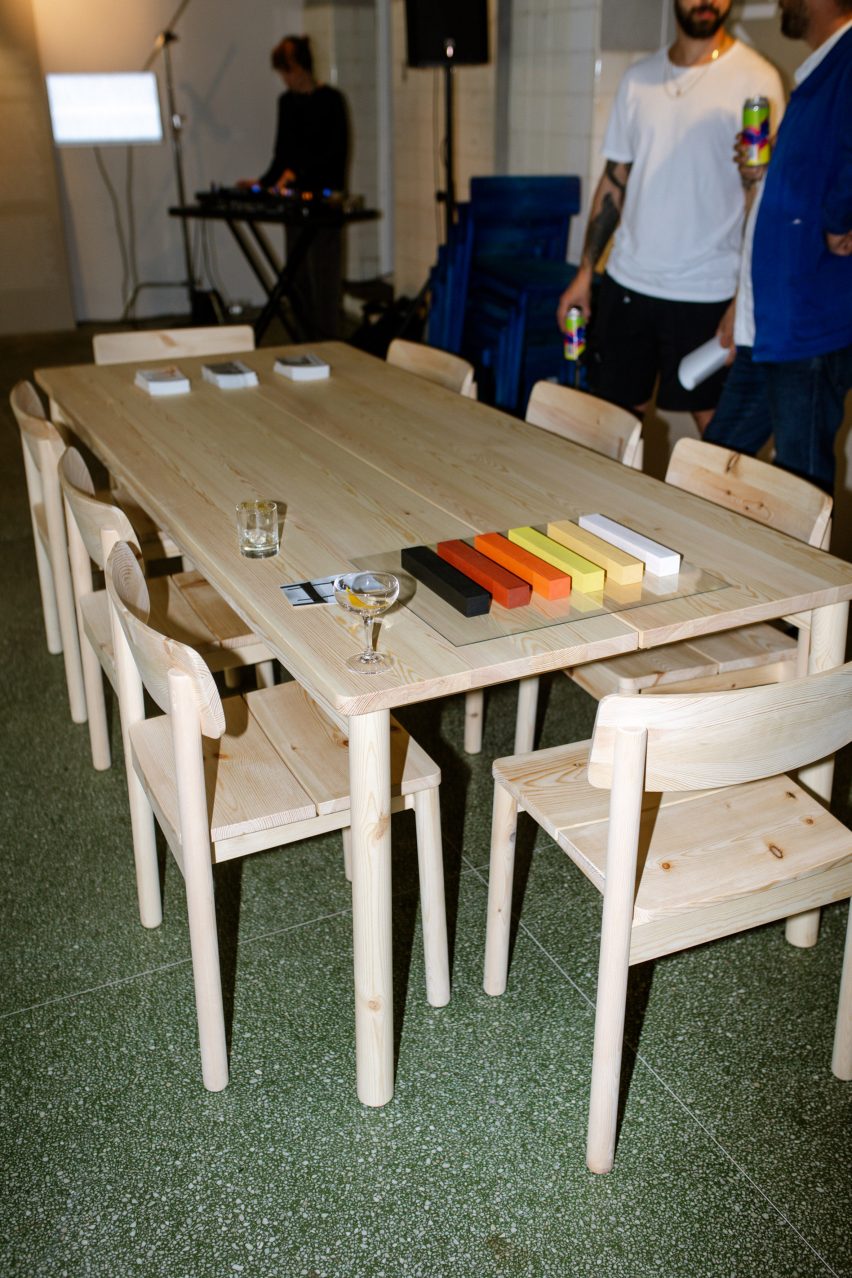
Customers can choose to leave the furniture unfinished or have it treated with linseed oil. Colour can also be added, with either a paint or lacquer finish.
"We wanted to offer different ways of purchasing the chair and different finishes, all with different levels of CO2 consumption, and allow the customer to make the choice themselves," Jenkins told Dezeen.
"It's a way of challenging and disrupting the industry, just as much as our work on the production side."
The products are deliberately oversized to make them more robust, which also means they can be sanded down and/or retreated if they get marked or dented in the future.
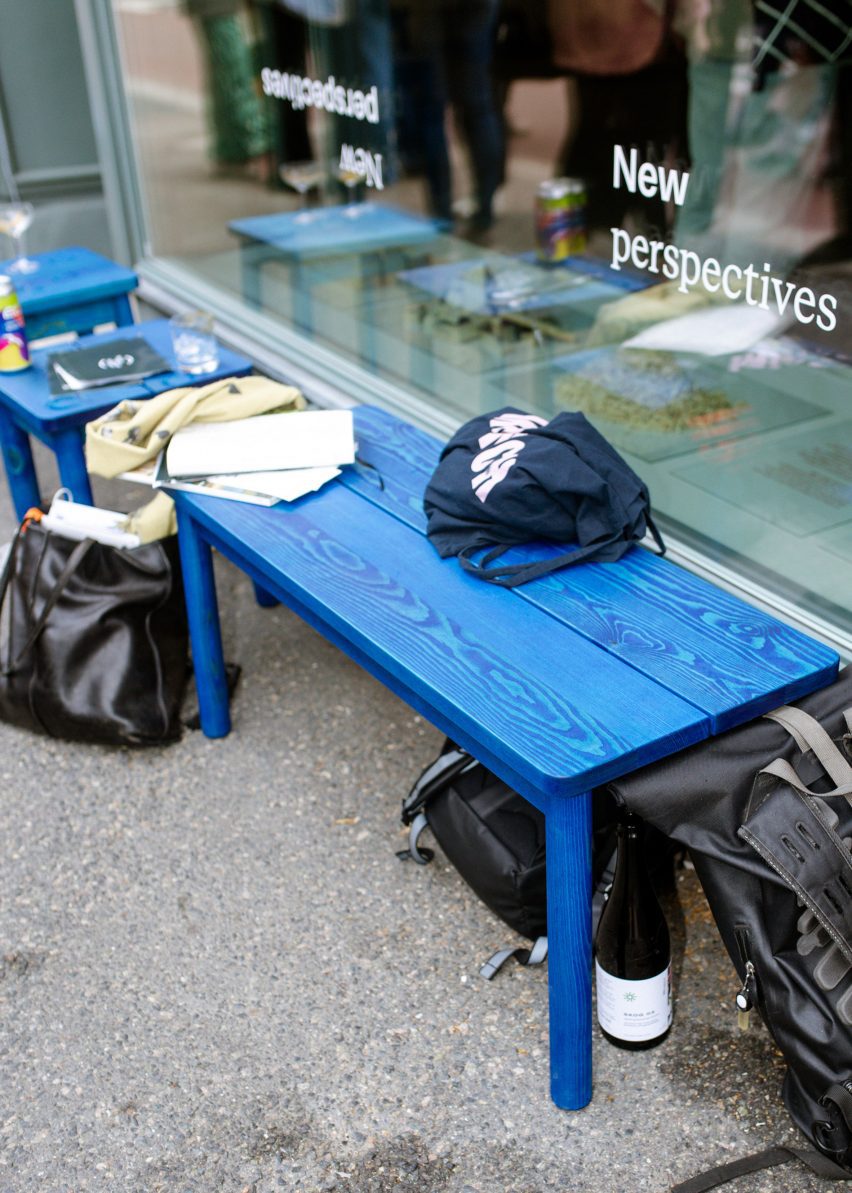
Jenkins said that "emotional durability" was also an important consideration. The designs are very simple, but they do have some defining characteristics.
Flat surfaces are made up of two pieces, meaning they can be made from standard-sized planks while legs are cylindrical.
The chair also features a double-curved backrest – a playful element that makes it comfortable from different angles.
"One of the key aspects of circularity is keeping the product in use in its original form for as long as possible," said Jenkins. "We need people to still want to use these products for 20, 30, 50 or even 100 years."
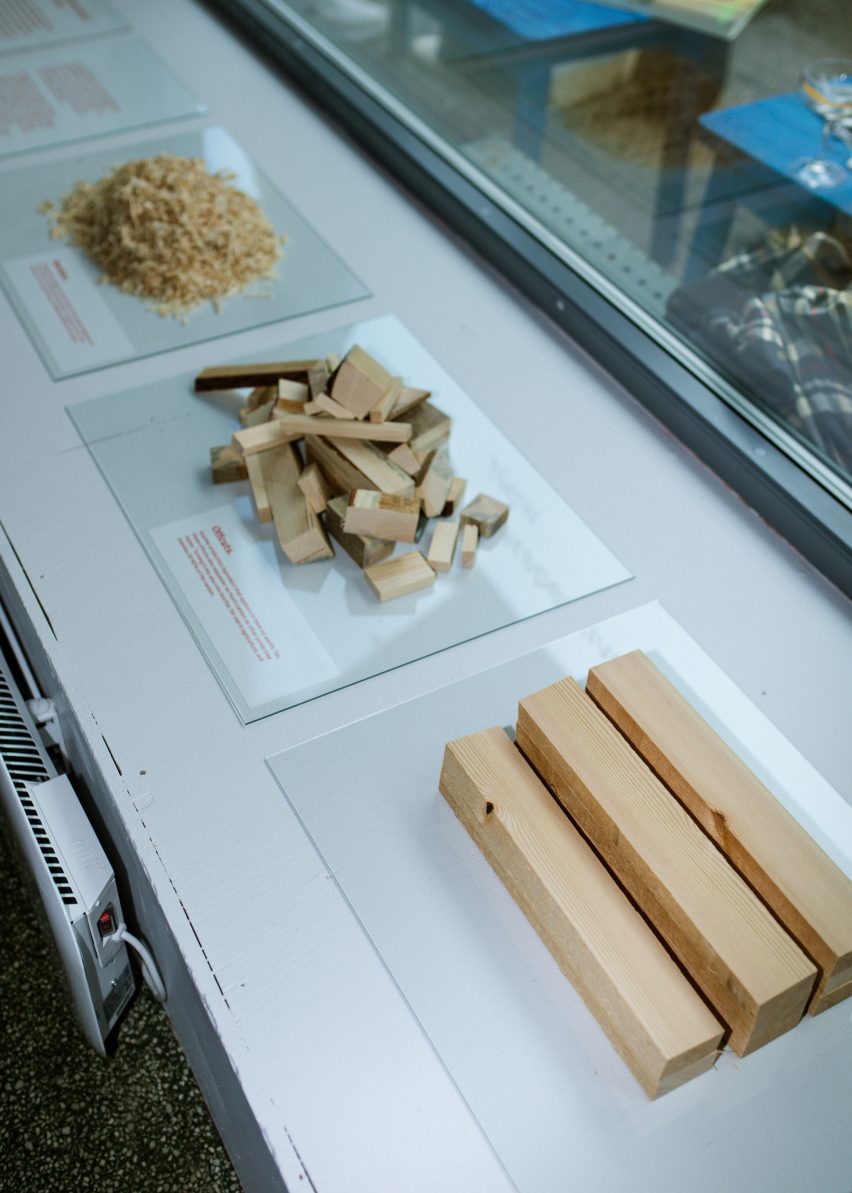
Minus launched its collection in a pop-up exhibition for Designers' Saturday, which took place in Oslo from 8 to 10 September.
Here, the company showcased new black and blue stain finishes for the Minus chair as well as seaweed-based bio-foam seat cushions by its partner brand Agroprene.
Minus plans to further improve its processes over the next 12 months, with the belief it can bring the CO2e of each chair down to as low as -15 kilograms.
One challenge the brand faces is that it can't back up its claims with an environmental certification, as the end-of-life benefits of biochar are not considered within Environmental Product Declarations (EPDs) and there is no guarantee they will ever be.
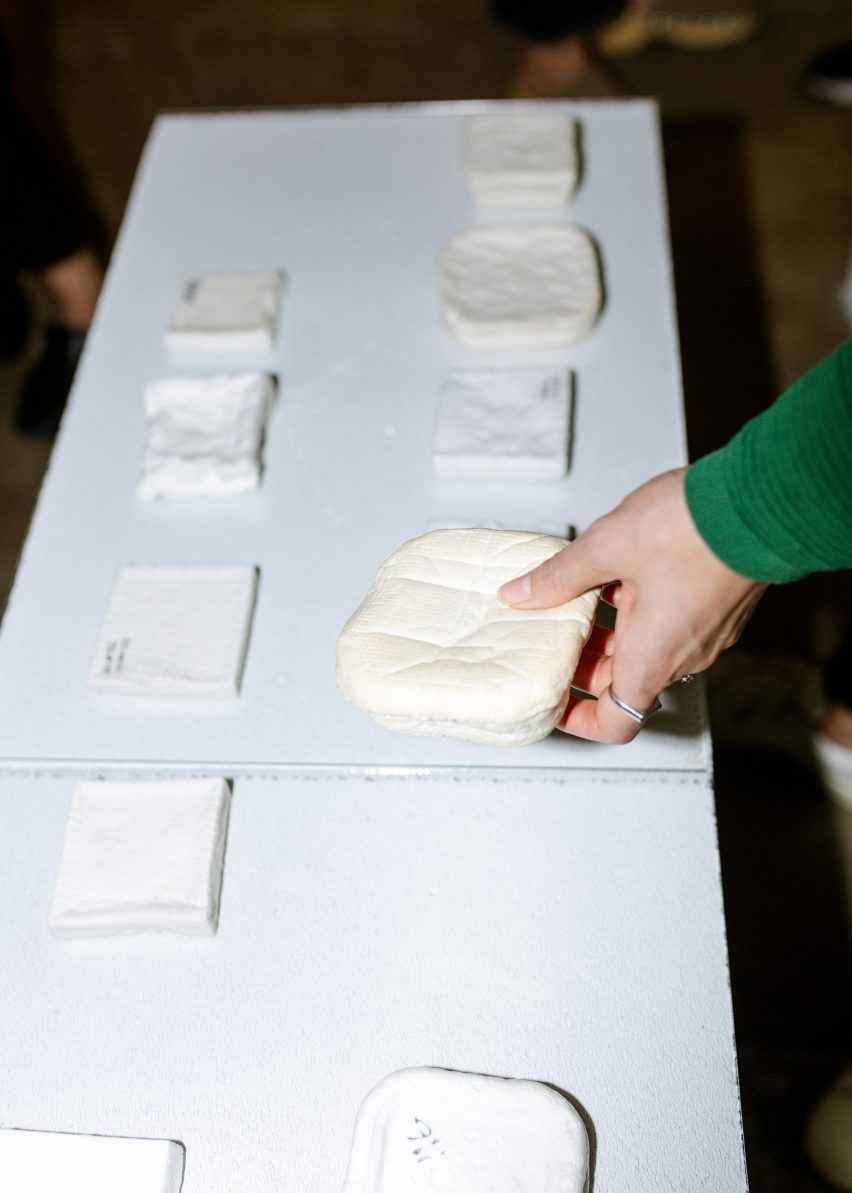
Yet Harnes is confident of its effectiveness, pointing to research stating that the production of biochar can stabilise 50 per cent of the carbon in biomass such as pine.
The brand has big ambitions for the future but needs to build its audience in order to make that happen.
"Getting the contract business going is a very important part of the Minus project succeeding," said Jenkins. "Then we can start looking at bigger projects. We want this to be sourced by local councils for schools."
The photography is by Kristianne Marøy.
The Minus exhibition was on show as part of Designers' Saturday from 8 to 10 September 2023. See Dezeen Events Guide for more architecture and design events around the world.